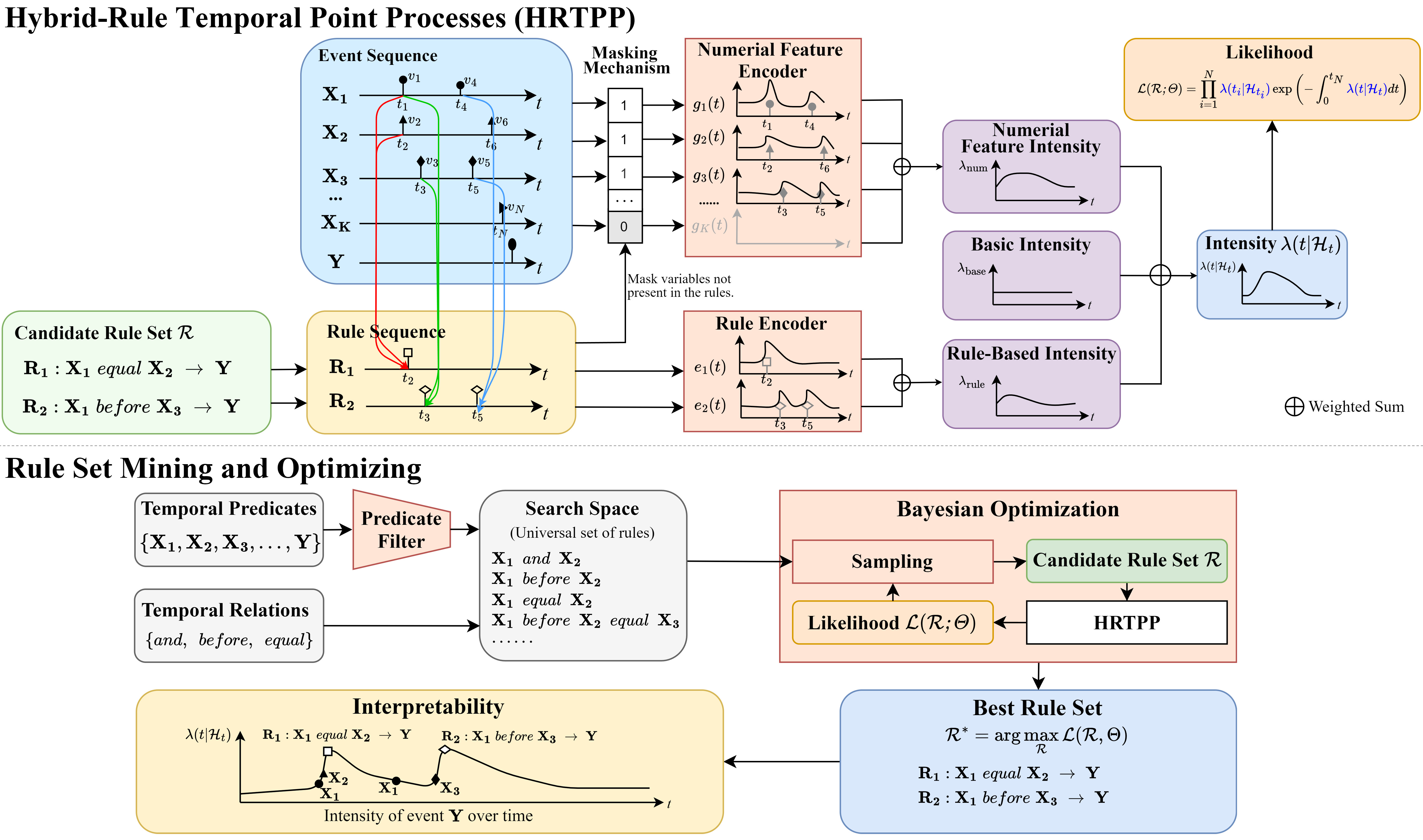HRTPP: Hybrid-Rule Temporal Point Processes
Published:
Hybrid-Rule Temporal Point Processes (HRTPP)
A Novel Framework for Interpretable and Accurate Event Sequence Modeling in Healthcare

Introduction
HRTPP is a novel framework designed to improve both the interpretability and predictive accuracy of Temporal Point Process (TPP) models, especially in clinical settings. Unlike traditional TPPs, HRTPP integrates logic-based rules and numerical attributes, leading to more precise and explainable predictions.
Core Methodology
1. Basic Intensity (\( \lambda_{base} \))
Represents the fundamental tendency of event occurrence as a trainable parameter:
2. Rule-Based Intensity (\( \lambda_{rule}(t) \))
Encodes temporal logic rules optimized through Bayesian search:
3. Numerical Feature Intensity (\( \lambda_{num}(t) \))
Dynamically modulates intensity using clinical measurements:
Where \( m_k = 1 \) if \( X_k \in X_V \), and \( m_k = 0 \) otherwise.
Combined Intensity Function
Rule Mining Strategy
Rule Candidate Generation
Generates candidate rules from historical data by filtering predicates and controlling rule complexity. This reduces the combinatorial search space.
Bayesian Optimization
Refines the rule set by maximizing log-likelihood using a probabilistic acquisition function. This balances interpretability with predictive utility.
Training and Loss
HRTPP parameters are trained by minimizing the negative log-likelihood:
Evaluation and Results
Evaluation is based on:
- Rule validity
- Model fitting quality (NLL)
- Temporal prediction accuracy (RMSE, Rule Accuracy)
Tests on real-world datasets (AKI, Stroke, Sepsis, CAD) demonstrate that HRTPP outperforms existing interpretable models. Case studies validate the rules’ clinical relevance. Ablation confirms that numerical features and rule mining phases contribute significantly to performance and robustness.
Rule Validity
Clinically meaningful rules validated by medical experts
Model Fitting (NLL)
Superior fit to observed event sequences
Temporal Predictive Accuracy
Measured by RMSE and Rule Accuracy
Clinical Validation
Case studies demonstrate disease progression insights

